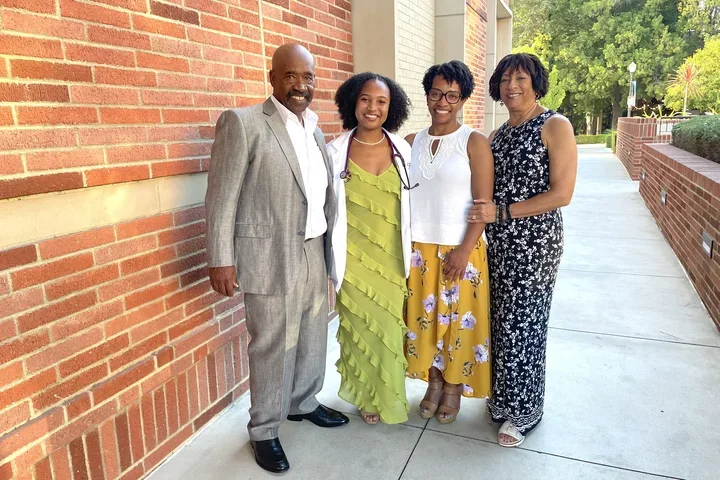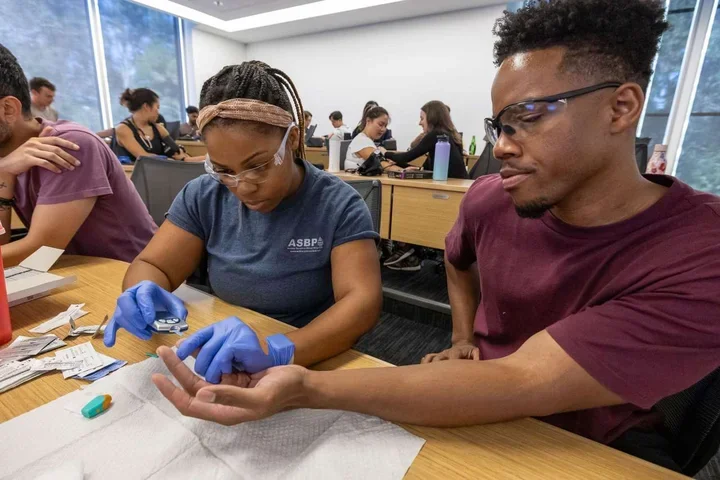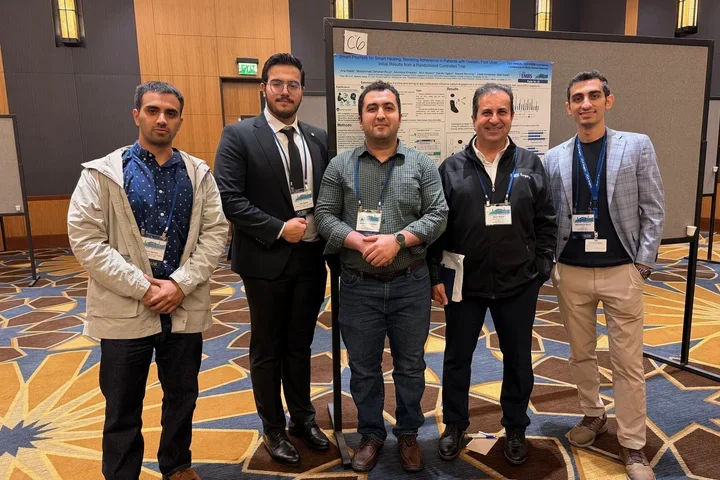Testicular Cancer Symptoms, Treatment, and Causes
Medical Expert Interview
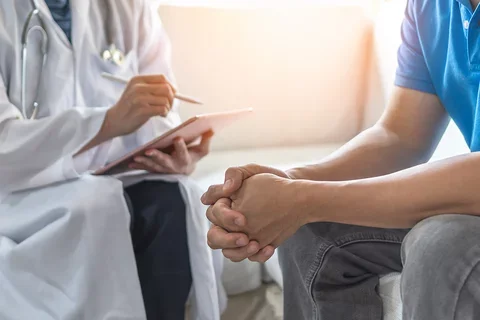
"In this field, I like to say the C doesn’t stand for cancer. It stands for curable."
In this article:
- Testicular Cancer Definition
- Testicular Cancer Causes
- Testicular Cancer Symptoms
- Testicular Cancer Diagnosis
- Testicular Cancer Types
- Testicular Cancer Treatment
- Testicular Cancer FAQ
Meet Dr. Mark Litwin
As Professor and Chair of the Department of Urology at UCLA, Dr. Litwin has been treating patients with testicular cancer for decades. His priorities? Improving quality of care, quality of life, and equitable access to care in urologic oncology.
"There are so many things we can fix in urology," he says when asked why he chose this particular field. "Also, it's a surgical specialty that has a lot of medicine in it. There is a long-term relationship when establishing care for these patients."
Indeed, the emotional connection Dr. Litwin forms with his testicular cancer patients is one of the most rewarding parts of his practice. "The typical patient hasn't had to think about his health in a serious, existential kind of way," he explains. "It's a moment where people can experience a tremendous amount of personal growth. I get a lot of gratification in helping provide guidance for that process."
Key to building that rapport with his patients is acknowledging that every situation is unique and each patient has different priorities and perspectives. "It can be a challenge to coordinate the importance of what needs to happen medically with whatever is happening in their lives," admits Dr. Litwin. "I had a patient I operated on a few weeks ago and his main question was: Will I be able to go to the first weekend of Coachella?" he recalls. "But it’s okay, I’ll meet them where they are."
And his patients appreciate this novel approach to treatment: "Ultimately they're cured, but I tend to stay in touch with them. And at Christmas time, I get tons of cards with pictures of them with their family."
It also allows Dr. Litwin to provide a special service to his patients: peer counseling. "One of my favorite things to do is to put newly diagnosed patients with peer mentors," he maintains. "I have a whole cadre of guys who are in their twenties, thirties, even in their forties, who have been through the exact same thing. And I can match—by age and other demographics—new patients with someone who’s a good fit."
In honor of Testicular Cancer Awareness Month, Dr. Litwin talked with us about typical testicular cancer symptoms, diagnosis, and treatment, as well as what he finds most challenging about this disease and areas he thinks could be improved. He also discusses some common misconceptions about testicular cancer, combating myths with facts and clarifying what’s most important for patients to know.
"Testicular cancer is highly, highly curable when it's caught early enough."
(What Is a Urologist? Click the link to learn more...)
What Is Testicular Cancer?
This type of cancer starts in the cells of the testicles, the male reproductive glands located in the scrotum. Testicular cancer usually presents as a painless lump or swelling in the testicle. The prognosis for testicular cancer is generally very good, especially if it is detected and treated early.
How Common Is Testicular Cancer?
Testicular cancer is relatively rare, accounting for only around 1% of all cancers in men. However, it is the most common type of cancer in young men aged 18 to 40. And the incidence of testicular cancer has been increasing over the past few decades. According to the American Cancer Society, about 9,190 new cases of testicular cancer will be diagnosed in the United States in 2023.
"Beyond 40, we occasionally see testicular tumors, but it's much less common. Younger than 18, occasionally, but not very common,” Dr. Litwin notes. “But between 18 and 40, that's the prime age range for testicular tumors."
"If you're between 18 and 40 and you haven't spent much time with your scrotum, get to know it better," he advises patients.
The Anatomy of the Scrotum
"It's important to understand the basic anatomy of what's in the nether regions," insists Dr. Litwin. "That way you know what can actually go wrong versus what can feel like it's going wrong."
The scrotum is the sac-like structure located below the penis that contains the testicles. It is an external pouch of skin and muscles that protects and supports the testicles and helps to regulate their temperature. The following are the main components of scrotum anatomy:
- Testicles: The testicles, or testes, are the two oval-shaped organs that produce sperm and the male sex hormone testosterone. They are located inside the scrotum and are attached to the body by the spermatic cord.
- Spermatic Cord: The spermatic cord is a bundle of blood vessels, nerves, and tubes that connects each testicle to the body. It also contains the vas deferens, which is the tube that carries sperm from the epididymis to the urethra.
- Epididymis: The epididymis is a coiled tube that is located on the top and back of each testicle. It is responsible for storing and maturing sperm before they are ejaculated.
- Dartos Muscle: This is a thin layer of smooth muscle that is located in the skin of the scrotum. It helps to regulate the temperature of the testicles by contracting or relaxing in response to changes in temperature.
- Cremaster Muscle: This is a thin layer of skeletal muscle that is located in the wall of the scrotum. It is responsible for pulling the testicles closer to the body or relaxing them away from the body in response to temperature changes and sexual arousal.
- Skin: The scrotum is covered by a thin layer of skin that is darker than the skin on the rest of the body. The skin is also rich in sweat glands and hair follicles.
What Causes Testicular Cancer?
How Do You Get Testicular Cancer?
The exact cause of testicular cancer is not known:
"There's really no great answer for the WHY ME? question. Did I do something? The answer to that is NO."
"There's nothing that a person can do behaviorally to cause testicular cancer," Dr. Litwin clarifies. "But beyond that we don't really know what causes it. It's probably genetic at some level, but we just don't understand the underlying reasons for testicular cancer."
However, research suggests that several factors may increase a person’s likelihood of developing the disease. Testicular cancer risk factors include:
- Abnormal Testicle Development: Men who have a condition called cryptorchidism—where one or both testicles fail to descend into the scrotum during fetal development—have a higher risk of testicular cancer.
- Age: Testicular cancer is most common in young men aged 18 to 40, although it can occur in men of any age.
- Race/Ethnicity: White men are at higher risk of testicular cancer than men of other races.
- Family History: Men with a family history of testicular cancer are at increased risk of developing the disease.
"Testicular cancer does have a tendency to run in families. So if a person has a father or a brother with a history of testicular cancer history, their chances of it are increased," says Dr. Litwin. "And it's a good idea to get extra checkups by a primary doctor or urologist. At the very least they should examine themselves regularly."
Important note: Having one or more of these risk factors does not necessarily mean that a man will develop testicular cancer. On the flip side, many men who develop the disease have no known risk factors.
What Does Testicular Cancer Feel Like?
What Are the Symptoms of Testicular Cancer?
"Most guys, when they feel a testicular tumor, will say that it feels like a painless swelling of the testicle," says Dr. Litwin. "Or like a rock that for some reason has started to grow from with inside the testicle."
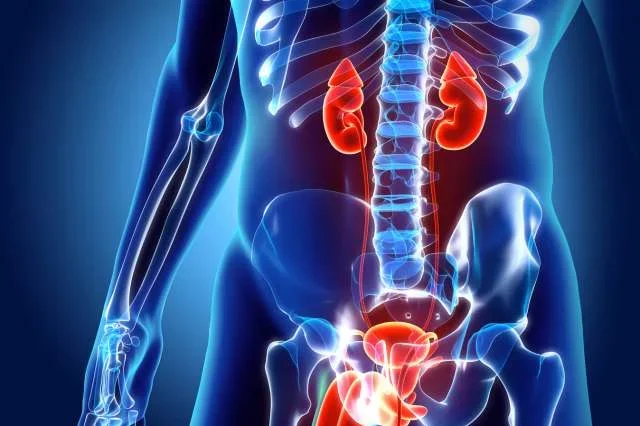
Other symptoms of testicular cancer may include:
- A feeling of heaviness in the scrotum
- A dull ache or discomfort in the lower abdomen or groin
- Breast tenderness or enlargement
- Back pain
- Enlarged lymph nodes in the abdomen or neck
However, not all men with testicular cancer will experience symptoms, and some men may have no symptoms at all.
Does Testicular Cancer Hurt?
"The typical answer is no," says Dr. Litwin. "Testicular tumors are usually silent. It's what we call a painless mass."
This is why it's important for men to perform regular self-exams of their testicles and see a doctor if they notice any changes or abnormalities.
That said, testicular cancer can sometimes cause a dull ache or discomfort in the affected testicle or scrotum.
How to Check for Testicular Cancer
"Young men should feel their own anatomy so they know what their normal nooks and crannies feel like so that they can tell if something abnormal has happened."
Performing regular self-exams of the testicles is an important part of early detection and treatment of testicular cancer. Here's how to perform a self-exam:
- Take a warm shower or bath to help relax the scrotum.
- Hold the scrotum in the palm of the hand and gently roll each testicle between the fingers.
- Look and feel for any lumps or changes in the size, shape, or texture of the testicles.
- Check for any tenderness, pain, or swelling in the scrotum.
- Repeat the exam on the other testicle.
It's recommended that men perform a self-exam of their testicles once a month. If they notice any lumps, changes in size or shape, or other abnormalities, see a doctor right away:
"You can palpate this, you can feel it during an exam, and you can feel it in the shower. And anybody who's got their fingers on your scrotum can feel it, so keep that in mind. If you feel a lump in your testicle, if you think you feel a lump on your testicle, go see your internist, go see your pediatrician from the old days, go see your family doctor, find a family doctor, or go see a urologist."
What Does Testicular Cancer Look Like?
Testicular cancer does not typically have a specific appearance that can be seen from the outside. In most cases, the only way to diagnose testicular cancer is through a physical exam and/or imaging tests.
How Is Testicular Cancer Diagnosed?
Here are some of the steps your doctor may take during a testicular cancer diagnosis:
- Physical exam: A healthcare professional may perform a physical exam of the testicles and scrotum to check for lumps, swelling, or other abnormalities.
- Ultrasound: An ultrasound is a non-invasive imaging test that uses high-frequency sound waves to create images of the inside of the body. An ultrasound can help detect the presence of a mass or growth within the testicle.
- Blood Tests: Blood tests can help measure the levels of certain proteins in the blood that may be elevated in men with testicular cancer.
If testicular cancer is diagnosed, additional tests may be performed to determine the extent and stage of the cancer, which can help guide treatment decisions. These tests may include CT scans, MRI scans, and chest X-rays.
"The more advanced we think the tumor is, the more of these tests we tend to order," explains Dr. Litwin. "But in general we start after the blood test with a series of straightforward scans which include the abdominal pelvic CT scan (a simple outpatient test) and then a plain chest x-ray, and we kind of go from there."
Testicular Cancer Test
If you have been diagnosed with testicular cancer, your doctor may order a variety of blood tests to help determine the stage and extent of the cancer: "Testicular cancers often secrete proteins and chemicals into the blood that we can measure, and those function as a marker for the testicular cancer. Not all of them secrete tumor markers, but many of them do."
There are three types of tumor marker blood tests:
- Alpha-fetoprotein (AFP)
- Human chorionic gonadotropin (HCG)
- Lactate dehydrogenase (LDH)
Elevated levels of these markers can indicate the presence of cancer and may help monitor the effectiveness of treatment.
Testicular Cyst vs Cancer
It’s common for men to mistake a testicular cyst (also called a spermatocele) for testicular cancer. What is a testicular cyst?
- A testicular cyst is a fluid-filled sac that develops within the testicle.
- It is usually non-cancerous (benign) and does not spread to other parts of the body.
- It may or may not cause symptoms, and is usually discovered during a routine physical exam or imaging test.
- Treatment may not be necessary unless the cyst is causing pain or discomfort, or if it is large or causing other problems.
"In general, if it's just a spermatocele, we don't even follow up on those," say Dr. Litwin. "They sometimes get better and go away over time, they sometimes get bigger over time, and sometimes they just stay the same, so it might just be part of you to have to learn to love."
Other Types of Non-Cancerous Abnormalities
- Varicocele: A varicocele is a condition in which the veins that drain blood from the testicles become enlarged and twisted. This causes blood to flow back into the scrotum, leading to a buildup of blood and a swollen, lumpy appearance. Varicoceles are most commonly found on the left side of the scrotum and are usually painless. However, in some cases, they can cause pain, discomfort, or fertility problems.
- Hydrocele: A hydrocele is a buildup of fluid in the scrotum, between the layers of tissue that surround the testicle. This can cause the scrotum to become enlarged and feel heavy. Hydroceles can be caused by injury, infection, or inflammation, but are often of unknown origin. In most cases, hydroceles are painless and do not require treatment. However, if the hydrocele is large, uncomfortable, or causing other problems, surgery may be necessary to drain the excess fluid.
- Lipoma: A lipoma is a benign (noncancerous) growth of fatty tissue that can occur anywhere in the body, including the scrotum. Lipomas in the scrotum are usually painless and feel like a soft, movable lump. They are typically slow-growing and may not require treatment unless they are causing discomfort or other symptoms.
Types of Testicular Cancer
There are two main types of testicular cancer: seminoma and non-seminoma.
- Seminoma: These tumors are usually slow-growing and are most common in men between the ages of 30 and 50. They tend to respond well to treatment and have a high cure rate.
- Non-seminoma: These tumors are more aggressive than seminomas and may contain several different types of cells. They typically occur in younger men and may require more aggressive treatment.
Non-seminoma tumors can further be classified into different subtypes:
- Teratoma: This type of tumor contains cells that are capable of developing into multiple types of tissue, including hair, bone, and muscle. Teratomas can be benign or malignant (cancerous), and are often found in combination with other types of non-seminoma tumors.
- Embryonal Carcinoma: This type of tumor contains cells that resemble early embryonic cells. It is a fast-growing tumor that can spread quickly, and is often found in combination with other types of non-seminoma tumors.
- Choriocarcinoma: This type of tumor contains cells that produce high levels of the hormone human chorionic gonadotropin (hCG). It is a rare and aggressive tumor that can spread quickly and is often found in combination with other types of non-seminoma tumors.
- Yolk Sac Tumor: This type of tumor contains cells that resemble the cells that form the yolk sac in a developing embryo. It is a rare type of tumor that is most often found in children and young adults.
"There's some other minor variants," Dr. Litwin confirms. "But these are the principal ones that we see in virtually every patient diagnosed with testicular cancer." And why is the tumor type important? "The cell type, the tumor type, helps us determine exactly how we're going to treat the patient."
How do you know which type of testicular cancer you have? "So this is not something that an x-ray or a biopsy can tell us. A biopsy is a big no-no with this kind of cancer," cautions Dr. Litwin. "However, once the tumor has been surgically removed, our pathologists look at it carefully under the microscope and tell us: is it seminoma or is it a non-seminoma or is it some mixture of both? And that in turn helps us decide how to advise patients on what to do next."
Testicular Cancer Stages
"As with any cancer, once we make the diagnosis, we have to classify: is it stage 1, stage 2, or stage 3?"
The testicular cancer stages describe how far the cancer has spread from the testicle to other parts of the body.
- Stage I: The cancer is confined to the testicle and has not spread to any lymph nodes or distant organs.
- Stage II: The cancer has spread to nearby lymph nodes in the abdomen, pelvis, or retroperitoneum (the area at the back of the abdomen behind the intestines).
- Stage III: The cancer has spread to distant organs such as the lungs, liver, or brain.
"Stage 3: That's the worst case scenario of course, but very typically still completely curable."
Treatment for Testicular Cancer
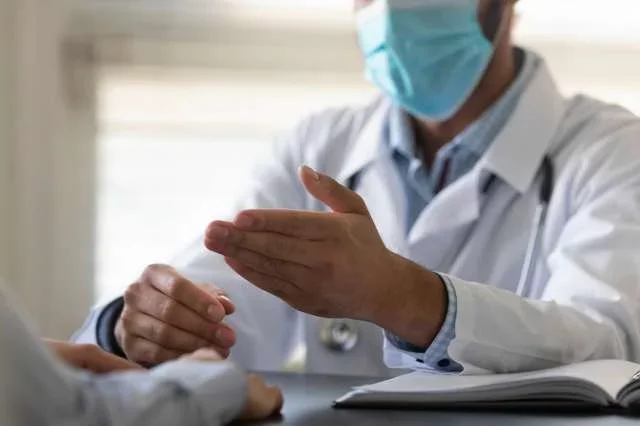
Testicular cancer treatment depends on several factors, including the stage and type of cancer, as well as the patient's overall health and preferences. Fortunately, with early diagnosis and proper treatment, testicular cancer can often be cured, and many men go on to live normal, healthy lives:
"We tend to be very aggressive and very hands-on in treating patients with testicular cancer for a variety of reasons… Number one: it's a tumor that when treated adequately can be completely cured. And number two: it affects men at the beginning of their lives, so urologists and oncologists want to make sure that these men get the correct treatment."
Here are some of the main treatment options for testicular cancer:
- Surgery: The most common treatment for testicular cancer is surgery to remove the affected testicle (orchiectomy). Lymph nodes in the abdomen may also be removed if the cancer has spread.
- Chemotherapy: Chemotherapy is a treatment that uses drugs to kill cancer cells throughout the body. It is often used after surgery to kill any remaining cancer cells and reduce the risk of recurrence.
- Radiation Therapy: Radiation therapy uses high-energy beams to kill cancer cells. It is sometimes used to treat seminoma tumors.
- Surveillance: In some cases, particularly for low-risk, early-stage cancers, doctors may recommend "watchful waiting" or surveillance instead of immediate treatment. This involves monitoring the cancer with regular exams and imaging tests to see if it changes or grows over time.
However, Dr. Litwin is wary of the "watchful waiting" approach: "Active surveillance can be accomplished if you've got a meticulous physician with a meticulous staff and a meticulous patient who is going to follow up and make a spreadsheet and make sure that he comes back for all those chest x-rays, all those bloodwork markers, and all those CAT scans or MRIs over the first 2 years in particular, but then really over the first 5 years," he clarifies. "My concern is that the demographics of the testicular cancer group are such that—based on my experience—it's tough to do all that follow-up."
Testicular Cancer Surgery
The main surgical treatment for testicular cancer is an orchiectomy, which involves the removal of the affected testicle: "Ectomy means removal, and orchi or orchid is the testicle itself. It comes from the ancient roots of the medical language."
During the surgery, the surgeon will carefully remove the entire testicle, along with the spermatic cord: "We don't make an incision on the scrotum, down in the ball sac, as some might think we do," explains Dr. Litwin. "But we make an incision further up on the groin area, and we do that in order to get out both the testicle and the spermatic cord. We need to do that in order to treat the patient properly."
In some cases, the surgeon may also remove nearby lymph nodes if the cancer has spread. This procedure is called a retroperitoneal lymph node dissection (RPLND). "This can be done either the traditional way, which is through an incision in the abdomen. This surgery requires 3 to 6 days of recovery in the hospital. Or it can be done laparoscopically, which only requires a few small incisions and an overnight stay in the hospital."
Testicular Cancer Medication
Which medications are most effective at treating testicular cancer? "Chemotherapy, chemotherapy, chemotherapy," insists Dr. Litwin. "Many cancers across the spectrum of human disease are sensitive to chemotherapy, but only somewhat so. Testicular cancer is among the most sensitive cancers in all of human medicine to chemotherapy."
Chemotherapy is a type of cancer treatment that uses drugs to kill cancer cells throughout the body. Several chemotherapy drugs are used to treat testicular cancer, including cisplatin, etoposide, and bleomycin. These drugs are typically given in combination and are often used after surgery to kill any remaining cancer cells.
Can Testicular Cancer Kill You?
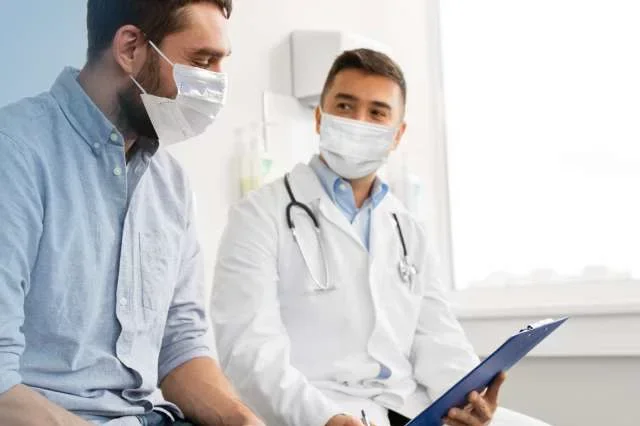
Yes, testicular cancer can be a serious and potentially life-threatening condition. If left untreated or if it spreads to other parts of the body, testicular cancer can be fatal. However, the overall testicular cancer survival rate is quite high, with more than 95% of men diagnosed with testicular cancer surviving at least five years after their initial diagnosis, and many living for decades after treatment.
"Testicular cancer is almost unique among human malignancies as even patients with widely disseminated, widely spread metastatic cancer can very often be completely cured and live out normal, happy, healthy lives," Dr. Litwin proclaims. "But you have got to get to the right medical center and to the right doctors who know what they're doing."
It's important to remember that the prognosis for testicular cancer will depend on several factors, including the type and stage of the cancer, as well as the patient's overall health and response to treatment. Regular self-exams and routine medical check-ups can help detect testicular cancer early—when it is most treatable—and can increase the chances of a successful outcome.
How Fast Does Testicular Cancer Spread?
The rate at which testicular cancer spreads can vary depending on the type and stage of the cancer, as well as other individual factors such as the patient's age and overall health. However, in general, testicular cancer tends to grow and spread relatively quickly:
"The most challenging aspect of treating patients with testicular cancer is balancing the reassurance that they're going to be okay with the gravity of the situation… and I don't always get it right."
If testicular cancer is not treated, it can spread beyond the testicle to nearby lymph nodes, and from there, it can spread to other parts of the body such as the lungs, liver, or brain. However, with early diagnosis and appropriate treatment, the risk of the cancer spreading can be greatly reduced.
How to Prevent Testicular Cancer
Unfortunately, there is no guaranteed way to prevent testicular cancer. However, there are some steps men can take to reduce their chances of developing this type of cancer or catching it early if it does happen:
- Perform regular self-exams: Regular self-exams can help men become familiar with the normal size, shape, and texture of their testicles, making it easier to detect any changes or abnormalities that may be a sign of cancer.
- Seek prompt medical attention for any changes: If you notice any changes in the size, shape, or texture of your testicles, or if you experience any pain or discomfort in the area, it's important to seek prompt medical attention. Early diagnosis and treatment can greatly increase the chances of a successful outcome.
- Maintain a healthy lifestyle: Eating a balanced diet, getting regular exercise, and avoiding tobacco and excessive alcohol consumption can help reduce the risk of developing many types of cancer, including testicular cancer.
- Consider testicular cancer screenings: Men with a family history of testicular cancer or other risk factors may benefit from regular medical check-ups and cancer screenings.
While these steps may not guarantee prevention of testicular cancer, they can help reduce risk and improve overall health.
Common Questions and Misconceptions About Testicular Cancer
1. If I lose a testicle, I won't be able to have kids.
"Not true. If you lose a testicle, his friend on the other side of your scrotum can produce sperm and get you the family that you want."
2. If I lose a testicle, my testosterone level will go down and I won't be able to have sex.
"Not true. If you lose a testicle his friend on the other side of the scrotum will pick up the slack almost immediately and make more testosterone. And you will still be able to have normal erections, libido, and sexual activity."
3. If I’m diagnosed with testicular cancer, I need to have both testicles removed.
"Not true. When you think about the intelligent design of human species, it makes sense that there's a backup."
4. STDs or sexually transmitted infections cause testicular cancer.
"Not true. Sexually transmitted infections are a whole separate issue. Yes, you should use condoms 100% of the time when sexually active but testicular cancer is not one of the risks of engaging in unprotected sex."
5. If I have a testicle removed, can I put in a falsie?
"Yes. We have saline filled prosthesis and silicone filled prosthesis that we've been using for many years in urology, and it looks, for all the world, like a regular testicle. We have 4 different sizes: medium, large, extra large, and ginormous. And we just plop it right in at the time that we're doing the orchiectomy."
6. If I have testicular cancer, what lifestyle changes should I make?
"There are no particular dietary changes or lifestyle changes that we know of today that can actually improve prognosis or diagnosis in testicular cancer. However, when you're diagnosed with a cancer of any kind it's a window of opportunity to get your life in order in terms of your diet, your exercise, and your lifestyle choices."
Looking Forward: What Needs to Change
1. Technology. "The development of an app or some kind of a device-based tracker specifically for testicular cancer, so that patients under various follow up protocols can track when they're due for their next blood test or chest X-ray or visit with a doctor, etc. That should be an incredibly easy fix, but no one's done it yet…"
2. Continued attention to survivorship issues. "Because this is a condition where we tend to cure the disease and move on. But patients still live with it. At what point do I tell a new romantic partner that I have one testicle? Will they even notice that one of them is made of silicon? At what point do I talk to a new romantic partner, or even just a new friend, about the fact that I've had cancer and what that means? At what point do I talk to a potential spouse about fertility issues because that's obviously a grave concern. The survivorship issues are significant."
3. Issues surrounding health insurance. "This whole issue of pre-existing conditions… The Affordable Care Act (Obamacare) was supposed to provide relief for people with a prior diagnosis. In practice it's not completely true."
4. Testicular cancer screening and education. "Teaching young men the importance of knowing their own body and knowing how to do a testicular self examination in much the same way that we teach adolescent girls about breast self exams. And understanding that if something feels amiss in that area, don't be embarrassed, because there’s a doctor who specializes in that."
Testicular Cancer Awareness Month
Testicular Cancer Awareness Month is an annual event observed in April to raise awareness about testicular cancer and promote education, prevention, and early detection of the disease. During this month, organizations, advocacy groups, and healthcare providers around the world promote awareness of testicular cancer and the importance of self-exams, regular check-ups, and early diagnosis.
The goals of Testicular Cancer Awareness Month include educating men and their families about the risk factors, signs, and symptoms of testicular cancer; encouraging men to perform regular self-exams to detect any abnormalities in their testicles; and promoting early diagnosis and treatment of the disease, which can greatly increase the chances of a successful outcome.
Testicular Cancer Awareness Month also provides an opportunity to raise funds for research into new treatments and therapies for testicular cancer, and to support organizations that provide support and resources for men and their families affected by the disease.
By raising awareness about testicular cancer and promoting early detection and treatment, Testicular Cancer Awareness Month aims to help reduce the impact of this disease on individuals, families, and communities.
